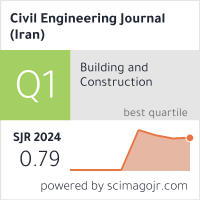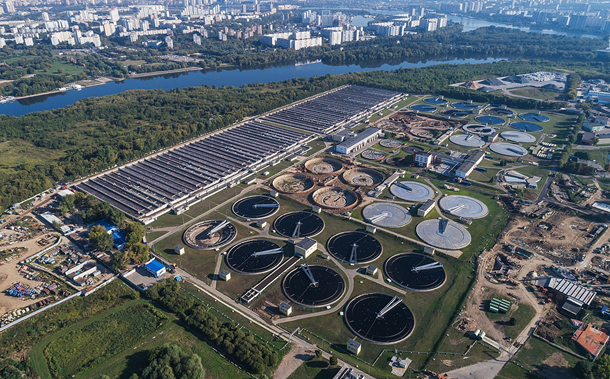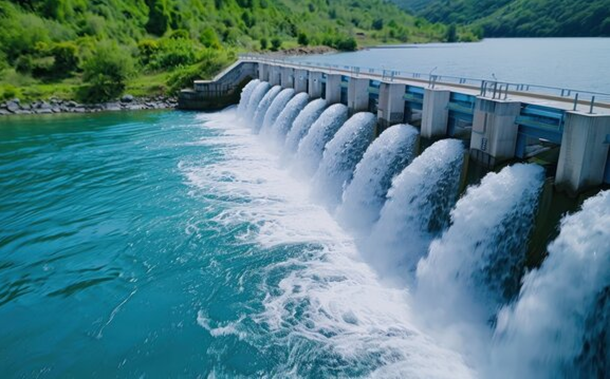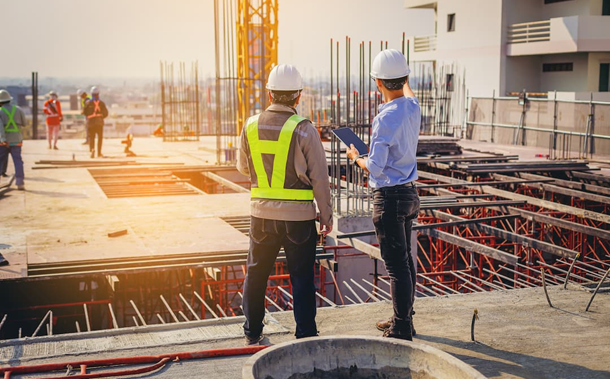Investigating Mechanical Properties of Metakaolin-Based Geopolymer Concrete Optimized with Wastepaper Ash and Plastic Granules
Downloads
Doi:10.28991/CEJ-SP2024-010-011
Full Text:PDF
Downloads
[2] Hendriks, C. A., Worrell, E., Price, L., Martin, N., Ozawa Meida, L., de Jager, D., & Riemer, P. (1999). Emission reduction of greenhouse gases from the cement industry. Greenhouse Gas Control Technologies 4, 30, 939–944. doi:10.1016/b978-008043018-8/50150-8.
[3] Lawrence, C. D. (1998). The Production of Low-Energy Cements. Lea's Chemistry of Cement and Concrete, 421–470, Elsevier, Amsterdam, Netherlands. doi:10.1016/b978-075066256-7/50021-7.
[4] John, S. K., Nadir, Y., & Girija, K. (2021). Effect of source materials, additives on the mechanical properties and durability of fly ash and fly ash-slag geopolymer mortar: A review. Construction and Building Materials, 280, 122443. doi:10.1016/j.conbuildmat.2021.122443.
[5] Davidovits, J. (2013). Geopolymer cement. A review. Geopolymer Institute, Technical papers, 21, Geopolymer Institute Library, Saint-Quentin, France.
[6] Wetzel, A., & Middendorf, B. (2019). Influence of silica fume on properties of fresh and hardened ultra-high performance concrete based on alkali-activated slag. Cement and Concrete Composites, 100, 53–59. doi:10.1016/j.cemconcomp.2019.03.023.
[7] Cai, R., Wu, T., Fu, C., & Ye, H. (2022). Thermal degradation of potassium-activated ternary slag-fly ash-silica fume binders. Construction and Building Materials, 320. doi:10.1016/j.conbuildmat.2021.126304.
[8] Xu, S., Yuan, P., Liu, J., Pan, Z., Liu, Z., Su, Y., Li, J., & Wu, C. (2021). Development and preliminary mix design of ultra-high-performance concrete based on geopolymer. Construction and Building Materials, 308, 125110. doi:10.1016/j.conbuildmat.2021.125110.
[9] Nair, A. S., Al-Bahry, S., Gathergood, N., Tripathi, B. N., & Sivakumar, N. (2020). Production of microbial lipids from optimized waste office paper hydrolysate, lipid profiling and prediction of biodiesel properties. Renewable Energy, 148, 124–134. doi:10.1016/j.renene.2019.12.008.
[10] Ighalo, J. O., & Adeniyi, A. G. (2020). A perspective on environmental sustainability in the cement industry. Waste Disposal and Sustainable Energy, 2(3), 161–164. doi:10.1007/s42768-020-00043-y.
[11] Ali, A., Hashmi, H. N., & Baig, N. (2013). Treatment of the paper mill effluent-A review. Annals of the Faculty of Engineering Hunedoara, 11(3), 337.
[12] Wang Wang, B., Li, K., Nan, D., Feng, S., Hu, B., Wang, T., & Lu, Q. (2022). Enhanced production of levoglucosenone from pretreatment assisted catalytic pyrolysis of waste paper. Journal of Analytical and Applied Pyrolysis, 165, 105567. doi:10.1016/j.jaap.2022.105567.
[13] Beyene, H. D., Werkneh, A. A., & Ambaye, T. G. (2018). Current updates on waste to energy (WtE) technologies: a review. Renewable Energy Focus, 24, 1–11. doi:10.1016/j.ref.2017.11.001.
[14] Das, S., Lee, S. H., Kumar, P., Kim, K. H., Lee, S. S., & Bhattacharya, S. S. (2019). Solid waste management: Scope and the challenge of sustainability. Journal of Cleaner Production, 228, 658–678. doi:10.1016/j.jclepro.2019.04.323.
[15] Ma, Y., Wang, J., & Zhang, Y. (2017). TG–FTIR study on pyrolysis of waste printing paper. Journal of Thermal Analysis and Calorimetry, 129(2), 1225–1232. doi:10.1007/s10973-017-6218-3.
[16] Solahuddin, B. A., & Yahaya, F. M. (2021). Properties of concrete containing shredded waste paper as an additive. Materials Today: Proceedings, 51, 1350–1354. doi:10.1016/j.matpr.2021.11.390.
[17] Palanichamy, P., Venkatachalam, S., & Gupta, S. (2023). Improved recovery of cellulose nanoparticles from printed wastepaper and its reinforcement in guar gum films. Biomass Conversion and Biorefinery, 13(15), 14113–14125. doi:10.1007/s13399-022-02516-y.
[18] Zhou, R. X., Stanley, R., & Le, M. (2012). Contamination of food with newspaper ink: An evidence-informed decision making (EIDM) case study of homemade dessert. Environmental Health Review, 55(02), 63–69. doi:10.5864/d2012-005.
[19] Duan, H., Zhao, Q., Song, J., & Duan, Z. (2021). Identifying opportunities for initiating waste recycling: Experiences of typical developed countries. Journal of Cleaner Production, 324. doi:10.1016/j.jclepro.2021.129190.
[20] Chen, W., Shi, S., Chen, M., & Zhou, X. (2017). Fast co-pyrolysis of waste newspaper with high-density polyethylene for high yields of alcohols and hydrocarbons. Waste Management, 67, 155–162. doi:10.1016/j.wasman.2017.05.032.
[21] Lakhiar, M. T., Bai, Y., Wong, L. S., Paul, S. C., Anggraini, V., & Kong, S. Y. (2022). Mechanical and durability properties of epoxy mortar incorporating coal bottom ash as filler. Construction and Building Materials, 315. doi:10.1016/j.conbuildmat.2021.125677.
[22] Antunes Boca Santa, R. A., Bernardin, A. M., Riella, H. G., & Kuhnen, N. C. (2013). Geopolymer synthetized from bottom coal ash and calcined paper sludge. Journal of Cleaner Production, 57, 302–307. doi:10.1016/j.jclepro.2013.05.017.
[23] Adesanya, E., Ohenoja, K., Luukkonen, T., Kinnunen, P., & Illikainen, M. (2018). One-part geopolymer cement from slag and pretreated paper sludge. Journal of Cleaner Production, 185, 168–175. doi:10.1016/j.jclepro.2018.03.007.
[24] Spathi, C., Young, N., Heng, J. Y. Y., Vandeperre, L. J. M., & Cheeseman, C. R. (2015). A simple method for preparing super-hydrophobic powder from paper sludge ash. Materials Letters, 142, 80–83. doi:10.1016/j.matlet.2014.11.123.
[25] Kim, M. J., & Jeon, J. (2020). Effects of Ca-ligand stability constant and chelating agent concentration on the CO2 storage using paper sludge ash and chelating agent. Journal of CO2 Utilization, 40. doi:10.1016/j.jcou.2020.101202.
[26] Yan, S., & Sagoe-Crentsil, K. (2016). Evaluation of fly ash geopolymer mortar incorporating calcined wastepaper sludge. Journal of Sustainable Cement-Based Materials, 5(6), 370–380. doi:10.1080/21650373.2016.1174962.
[27] Sadique, M., Al-Nageim, H., Atherton, W., Seton, L., & Dempster, N. (2019). Analytical investigation of hydration mechanism of a non-Portland binder with waste paper sludge ash. Construction and Building Materials, 211, 80–87. doi:10.1016/j.conbuildmat.2019.03.232.
[28] De Silva, G. S., & De Silva, B. G. N. G. (2023). Run-off water qualities and engineering properties of sustainable paving blocks with combined waste: waste rice husk ash and coal bottom ash. Innovative Infrastructure Solutions, 8(6), 165. doi:10.1007/s41062-023-01125-6.
[29] Luo, Y. P., Yang, L. B., Wang, D., Zhang, Q., Wang, Z. Y., Xing, M. G., Xue, G., Zhang, J., & Liu, Z. (2024). Effect of GGBFS on the mechanical properties of metakaolin-based self-compacting geopolymer concrete. Journal of Building Engineering, 96. doi:10.1016/j.jobe.2024.110501.
[30] Gopalakrishna, B., & Pasla, D. (2024). Study of Ambient Cured Fly Ash-GGBS-Metakaolin-Based Geopolymers Mortar. Low Carbon Materials and Technologies for a Sustainable and Resilient Infrastructure. CBKR 2023, Lecture Notes in Civil Engineering, 440, Springer, Singapore. doi:10.1007/978-981-99-7464-1_3.
[31] Thakur, M., & Bawa, S. (2024). Evaluation of strength and durability properties of fly ash-based geopolymer concrete containing GGBS and dolomite. Energy, Ecology and Environment, 9(3), 256–271. doi:10.1007/s40974-023-00309-1.
[32] World Green Building Council (2019). Global Status Report for Buildings and Construction. World Green Building Council, London, United Kingdom.
[33] Yan, H., Shen, Q., Fan, L. C. H., Wang, Y., & Zhang, L. (2010). Greenhouse gas emissions in building construction: A case study of One Peking in Hong Kong. Building and Environment, 45(4), 949–955. doi:10.1016/j.buildenv.2009.09.014.
[34] Miller, S. A., Habert, G., Myers, R. J., & Harvey, J. T. (2021). Achieving net zero greenhouse gas emissions in the cement industry via value chain mitigation strategies. One Earth, 4(10), 1398–1411. doi:10.1016/j.oneear.2021.09.011.
[35] Ford, H. V., Jones, N. H., Davies, A. J., Godley, B. J., Jambeck, J. R., Napper, I. E., Suckling, C. C., Williams, G. J., Woodall, L. C., & Koldewey, H. J. (2022). The fundamental links between climate change and marine plastic pollution. Science of the Total Environment, 806, 150392. doi:10.1016/j.scitotenv.2021.150392.
[36] Major, K. (2021). Plastic Waste and Climate Change”What's the Connection. World Wildlife Fund, Gland, Switzerland.
[37] Kumar, R., Verma, A., Shome, A., Sinha, R., Sinha, S., Jha, P. K., Kumar, R., Kumar, P., Shubham, Das, S., Sharma, P., & Prasad, P. V. V. (2021). Impacts of plastic pollution on ecosystem services, sustainable development goals, and need to focus on circular economy and policy interventions. Sustainability (Switzerland), 13(17), 9963. doi:10.3390/su13179963.
[38] Zheng, J., & Suh, S. (2019). Strategies to reduce the global carbon footprint of plastics. Nature Climate Change, 9(5), 374–378. doi:10.1038/s41558-019-0459-z.
[39] Stegmann, P., Daioglou, V., Londo, M., van Vuuren, D. P., & Junginger, M. (2022). Plastic futures and their CO2 emissions. Nature, 612(7939), 272–276. doi:10.1038/s41586-022-05422-5.
[40] Venkatarama Reddy, B. V. (2009). Sustainable materials for low carbon buildings. International Journal of Low-Carbon Technologies, 4(3), 175–181. doi:10.1093/ijlct/ctp025.
[41] Crawford, R. H. (2022). Greenhouse Gas Emissions of Global Construction Industries. IOP Conference Series: Materials Science and Engineering, 1218(1), 012047. doi:10.1088/1757-899x/1218/1/012047.
[42] Abeysinghe, S., Gunasekara, C., Bandara, C., Nguyen, K., Dissanayake, R., & Mendis, P. (2021). Engineering performance of concrete incorporated with recycled high-density polyethylene (HDPE)”A systematic review. Polymers, 13(11), 1885. doi:10.3390/polym13111885.
[43] Tamrin, Jamal, M., & Ramadhani, P. (2020). The effect of the shape and size of HDPE plastic admixtures on to K125 concrete. IOP Conference Series: Earth and Environmental Science, 419(1), 12066. doi:10.1088/1755-1315/419/1/012066.
[44] Atienza, E. M., De Jesus, R. M., & Ongpeng, J. M. C. (2023). Development of Foam Fly Ash Geopolymer with Recycled High-Density Polyethylene (HDPE) Plastics. Polymers, 15(11), 2413. doi:10.3390/polym15112413.
[45] Tamil Selvi, M., Dasarathy, A. K., & Ponkumar Ilango, S. (2021). Mechanical properties on light weight aggregate concrete using high density polyethylene granules. Materials Today: Proceedings, 81(2), 926–930. doi:10.1016/j.matpr.2021.04.302.
[46] Zhang, H. Y., Kodur, V., Qi, S. L., Cao, L., & Wu, B. (2014). Development of metakaolin-fly ash based geopolymers for fire resistance applications. Construction and Building Materials, 55, 38–45. doi:10.1016/j.conbuildmat.2014.01.040.
[47] Yang, K. H., Cho, A. R., Song, J. K., & Nam, S. H. (2012). Hydration products and strength development of calcium hydroxide-based alkali-activated slag mortars. Construction and Building Materials, 29, 410-419. doi:10.1016/j.conbuildmat.2011.10.063.
[48] Andrew R.M. (2018). Global CO2 emissions from cement production. Earth System Science Data, 10(4), 1–20. doi:10.5281/zenodo.831455.
[49] Nath, P., & Sarker, P. K. (2017). Flexural strength and elastic modulus of ambient-cured blended low-calcium fly ash geopolymer concrete. Construction and Building Materials, 130, 22–31. doi:10.1016/j.conbuildmat.2016.11.034.
[50] Mohammadhosseini, H., Ngian, S. P., Alyousef, R., & Tahir, M. M. (2021). Synergistic effects of waste plastic food tray as low-cost fibrous materials and palm oil fuel ash on transport properties and drying shrinkage of concrete. Journal of Building Engineering, 42, 102826. doi:10.1016/j.jobe.2021.102826.
[51] Pacheco-Torgal, F., Cabeza, L. F., Labrincha, J., & De Magalhaes, A. G. (2014). Eco-efficient construction and building materials: life cycle assessment (LCA), eco-labelling and case studies. Woodhead Publishing, Sawston, United Kingdom.
[52] Munir, Q., Abdulkareem, M., Horttanainen, M., & Kärki, T. (2023). A comparative cradle-to-gate life cycle assessment of geopolymer concrete produced from industrial side streams in comparison with traditional concrete. Science of the Total Environment, 865, 161230. doi:10.1016/j.scitotenv.2022.161230.
[53] Cordeiro, G. C., Toledo Filho, R. D., & Fairbairn, E. M. R. (2009). Effect of calcination temperature on the pozzolanic activity of sugar cane bagasse ash. Construction and Building Materials, 23(10), 3301–3303. doi:10.1016/j.conbuildmat.2009.02.013.
[54] Cherian, C., & Siddiqua, S. (2019). Pulp and paper mill fly ash: A review. Sustainability (Switzerland), 11(16), 4394. doi:10.3390/su11164394.
[55] Midhin, M. A. K., Wong, L. S., & Jasim, A. M. D. A. (2024). Assessing the Influence of Calcium-Based Alkaline Activators and Metakaolin on the Compressive Strength Development of Geopolymer Concrete for Different Mix Design Parameters. Annales de Chimie: Science Des Materiaux, 48(5), 667–677. doi:10.18280/acsm.480507.
[56] ASTM C33/C33M-18. (2023). Standard Specification for Concrete Aggregates. ASTM International, Pennsylvania, United States. doi:10.1520/C0033_C0033M-18.
[57] BS EN 12390-3. (2009). Testing Hardened Concrete. CS of Test Specimens. Testing Hardened Concrete”Part 3: Compressive Strength of Test Specimens. British Standard Institute, London, United Kingdom.
[58] BS EN 12390-6. (2009). Testing hardened concrete. Tensile splitting strength of test specimens. British Standard Institute, London, United Kingdom.
[59] ASTM C293/C293M-16. (2016). Standard Test Method for Flexural Strength of Concrete (Using Simple Beam with Center-Point Loading). ASTM International, Pennsylvania, United States. doi:10.1520/C0293_C0293M-16.
[60] ASTM C597-16. (2016). Standard Test Method for Pulse Velocity through Concrete. ASTM International, Pennsylvania, United States. doi:10.1520/C0597-16.
[61] ASTM C642-21. (2022). Standard Test Method for Density, Absorption, and Voids in Hardened Concrete. ASTM International, Pennsylvania, United States. doi:10.1520/C0642-21.
[62] Kumar, P., Pankar, C., Manish, D., & Santhi, A. S. (2018). Study of mechanical and microstructural properties of geopolymer concrete with GGBS and Metakaolin. Materials Today: Proceedings, 5(14), 28127–28135. doi:10.1016/j.matpr.2018.10.054.
[63] Vu, C. C., Plé, O., Weiss, J., & Amitrano, D. (2020). Revisiting the concept of characteristic compressive strength of concrete. Construction and Building Materials, 263. doi:10.1016/j.conbuildmat.2020.120126.
[64] Wong, L. S., Oweida, A. F. M., Kong, S. Y., Iqbal, D. M., & Regunathan, P. (2020). The surface coating mechanism of polluted concrete by Candida ethanolica induced calcium carbonate mineralization. Construction and Building Materials, 257, 119482. doi:10.1016/j.conbuildmat.2020.119482.
[65] Wang, Z., Zou, D., Liu, T., & Zhou, A. (2021). Influence of paste coating thickness on the compressive strength, permeability, and mesostructure of permeable concrete. Construction and Building Materials, 299, 123994. doi:10.1016/j.conbuildmat.2021.123994.
[66] Fletcher, R. A., MacKenzie, K. J. D., Nicholson, C. L., & Shimada, S. (2005). The composition range of aluminosilicate geopolymers. Journal of the European Ceramic Society, 25(9), 1471–1477. doi:10.1016/j.jeurceramsoc.2004.06.001.
[67] Autef, A., Joussein, E., Gasgnier, G., & Rossignol, S. (2012). Role of the silica source on the geopolymerization rate ALL or. Journal of Non-Crystalline Solids, 358(21), 2886–2893. doi:10.1016/j.jnoncrysol.2012.07.015.
[68] Meko, B., & Ighalo, J. (2021). Utilization of waste paper ash as supplementary cementitious material in C-25 concrete: Evaluation of fresh and hardened properties. Cogent Engineering, 8(1), 1938366. doi:10.1080/23311916.2021.1938366.
[69] Singh, R. P., Vanapalli, K. R., Cheela, V. R. S., Peddireddy, S. R., Sharma, H. B., & Mohanty, B. (2023). Fly ash, GGBS, and silica fume based geopolymer concrete with recycled aggregates: Properties and environmental impacts. Construction and Building Materials, 378, 131168. doi:10.1016/j.conbuildmat.2023.131168.
[70] Singh, R. P., Vanapalli, K. R., Jadda, K., & Mohanty, B. (2024). Durability assessment of fly ash, GGBS, and silica fume based geopolymer concrete with recycled aggregates against acid and sulfate attack. Journal of Building Engineering, 82, 108354. doi:10.1016/j.jobe.2023.108354.
[71] Rathinam, K., & Kanagarajan, V. (2022). Behaviour of Fly ash and GGBS based Monoblock Prestressed Geopolymer Concrete Composite sleepers. Materials Today: Proceedings, 65, 3321–3327. doi:10.1016/j.matpr.2022.05.406.
[72] Bouaissi, A., Li, L. yuan, Al Bakri Abdullah, M. M., & Bui, Q. B. (2019). Mechanical properties and microstructure analysis of FA-GGBS-HMNS based geopolymer concrete. Construction and Building Materials, 210, 198–209. doi:10.1016/j.conbuildmat.2019.03.202.
[73] Gao, X., Yu, Q. L., & Brouwers, H. J. H. (2015). Properties of alkali activated slag-fly ash blends with limestone addition. Cement and Concrete Composites, 59, 119–128. doi:10.1016/j.cemconcomp.2015.01.007.
[74] Prusty, J. K., & Pradhan, B. (2020). Effect of GGBS and chloride on compressive strength and corrosion performance of steel in fly ash-GGBS based geopolymer concrete. Materials Today: Proceedings, 32, 850–855. doi:10.1016/j.matpr.2020.04.210.
[75] Dawood, A. O., AL-Khazraji, H., & Falih, R. S. (2021). Physical and mechanical properties of concrete containing PET wastes as a partial replacement for fine aggregates. Case Studies in Construction Materials, 14, 482. doi:10.1016/j.cscm.2020.e00482.
[76] Ismail, Z. Z., & AL-Hashmi, E. A. (2008). Use of waste plastic in concrete mixture as aggregate replacement. Waste Management, 28(11), 2041–2047. doi:10.1016/j.wasman.2007.08.023.
[77] Jindal, B. B., Singhal, D., Sharma, S. K., & Ashish, D. K. (2017). Improving CS of low calcium fly ash GPC with alccofine. Advances in Concrete Construction, 5(1), 17. doi:10.12989/acc.2017.19.2.017.
[78] Waqas, R. M., Butt, F., Zhu, X., Jiang, T., & Tufail, R. F. (2021). A comprehensive study on the factors affecting the workability and mechanical properties of ambient cured fly ash and slag based geopolymer concrete. Applied Sciences (Switzerland), 11(18), 8722. doi:10.3390/app11188722.
[79] Xie, J., Wang, J., Rao, R., Wang, C., & Fang, C. (2019). Effects of combined usage of GGBS and fly ash on workability and mechanical properties of alkali activated geopolymer concrete with recycled aggregate. Composites Part B: Engineering, 164, 179–190. doi:10.1016/j.compositesb.2018.11.067.
[80] Lee, W. K. W., & Van Deventer, J. S. J. (2002). The effect of ionic contaminants on the early-age properties of alkali-activated fly ash-based cements. Cement and Concrete Research, 32(4), 577–584. doi:10.1016/S0008-8846(01)00724-4.
[81] Hadi, M. N. S., Zhang, H., & Parkinson, S. (2019). Optimum mix design of geopolymer pastes and concretes cured in ambient condition based on compressive strength, setting time and workability. Journal of Building Engineering, 23, 301–313. doi:10.1016/j.jobe.2019.02.006.
[82] Nath, P., & Sarker, P. K. (2014). Effect of GGBFS on setting, workability and early strength properties of fly ash geopolymer concrete cured in ambient condition. Construction and Building Materials, 66, 163–171. doi:10.1016/j.conbuildmat.2014.05.080.
[83] Poloju, K. K., & Srinivasu, K. (2020). Impact of GGBS and strength ratio on mechanical properties of geopolymer concrete under ambient curing and oven curing. Materials Today: Proceedings, 42, 962–968. doi:10.1016/j.matpr.2020.11.934.
[84] Pawluczuk, E., Kalinowska-Wichrowska, K., Jiménez, J. R., Fernández-Rodríguez, J. M., & Suescum-Morales, D. (2021). Geopolymer concrete with treated recycled aggregates: Macro and microstructural behavior. Journal of Building Engineering, 44, 103317. doi:10.1016/j.jobe.2021.103317.
[85] Shilar, F. A., Ganachari, S. V., Patil, V. B., Neelakanta Reddy, I., & Shim, J. (2023). Preparation and validation of sustainable metakaolin based geopolymer concrete for structural application. Construction and Building Materials, 371, 130688. doi:10.1016/j.conbuildmat.2023.130688.
[86] Deb, P. S., Nath, P., & Sarker, P. K. (2014). The effects of ground granulated blast-furnace slag blending with fly ash and activator content on the workability and strength properties of geopolymer concrete cured at ambient temperature. Materials and Design, 62, 32–39. doi:10.1016/j.matdes.2014.05.001.
[87] Matalkah, F., Aqel, R., & Ababneh, A. (2020). Enhancement of the Mechanical Properties of Kaolin Geopolymer Using Sodium Hydroxide and Calcium Oxide. Procedia Manufacturing, 44, 164–171. doi:10.1016/j.promfg.2020.02.218.
[88] Yip, C. K., Lukey, G. C., & Van Deventer, J. S. J. (2005). The coexistence of geopolymeric gel and calcium silicate hydrate at the early stage of alkaline activation. Cement and Concrete Research, 35(9), 1688–1697. doi:10.1016/j.cemconres.2004.10.042.
[89] Garcia-Lodeiro, I., Palomo, A., Fernández-Jiménez, A., & MacPhee, D. E. (2011). Compatibility studies between N-A-S-H and C-A-S-H gels. Study in the ternary diagram Na2O-CaO-Al2O3-SiO 2-H2O. Cement and Concrete Research, 41(9), 923–931. doi:10.1016/j.cemconres.2011.05.006.
[90] Zhao, X., Liu, C., Zuo, L., Wang, L., Zhu, Q., & Wang, M. (2019). Investigation into the effect of calcium on the existence form of geopolymerized gel product of fly ash based geopolymers. Cement and Concrete Composites, 103, 279–292. doi:10.1016/j.cemconcomp.2018.11.019.
[91] Rahim, N. L., Salehuddin, S., Ibrahim, N. M., Amat, R. C., & Ab Jalil, M. F. (2013). Use of plastic waste (high density polyethylene) in concrete mixture as aggregate replacement. Advanced Materials Research, 701, 265–269. doi:10.4028/www.scientific.net/AMR.701.265.
[92] Santhi, Mh., & Santhi, H. M. (2017). Strength and Chloride Permeable Properties of Concrete with High Density Polyethylene Waste. Article in International Journal of Chemical Sciences, 15(1), 108.
[93] Kangavar, M. E., Lokuge, W., Manalo, A., Karunasena, W., & Frigione, M. (2022). Investigation on the properties of concrete with recycled polyethylene terephthalate (PET) granules as fine aggregate replacement. Case Studies in Construction Materials, 16, 934. doi:10.1016/j.cscm.2022.e00934.
[94] Parashar, A. K., Sharma, P., & Sharma, N. (2022). Effect on the strength of GGBS and fly ash based geopolymer concrete. Materials Today: Proceedings, 62, 4130–4133. doi:10.1016/j.matpr.2022.04.662.
[95] Saxena, A., Sulaiman, S. S., Shariq, M., & Ansari, M. A. (2023). Experimental and analytical investigation of concrete properties made with recycled coarse aggregate and bottom ash. Innovative Infrastructure Solutions, 8(7), 197. doi:10.1007/s41062-023-01165-y.
[96] BS 1881-125. (1986). Testing Concrete Part 203. Recommendations for measurement of velocity of ultrasonic pulses in concrete. In Construction Standard (Vol. 2, Issue 2, pp. 1–14).
[97] Albidah, A., Alqarni, A. S., Abbas, H., Almusallam, T., & Al-Salloum, Y. (2022). Behavior of Metakaolin-Based geopolymer concrete at ambient and elevated temperatures. Construction and Building Materials, 317. doi:10.1016/j.conbuildmat.2021.125910.
[98] Bellum, R. R., Muniraj, K., & Madduru, S. R. C. (2020). Influence of slag on mechanical and durability properties of fly ash-based geopolymer concrete. Journal of the Korean Ceramic Society, 57(5), 530–545. doi:10.1007/s43207-020-00056-7.
[99] Xu, Z., Long, H., Liu, Q., Yu, H., Zhang, X., & Hui, D. (2023). Mechanical properties and durability of geopolymer concrete based on fly ash and coal gangue under different dosage and particle size of nano silica. Construction and Building Materials, 387, 131622. doi:10.1016/j.conbuildmat.2023.131622.
[100] Lim, J. C., & Ozbakkaloglu, T. (2015). Influence of concrete age on stress-strain behavior of FRP-confined normal- and high-strength concrete. Construction and Building Materials, 82, 61–70. doi:10.1016/j.conbuildmat.2015.02.020.
[101] Gao, D., Zhang, L., & Nokken, M. (2017). Compressive behavior of steel fiber reinforced recycled coarse aggregate concrete designed with equivalent cubic compressive strength. Construction and Building Materials, 141, 235–244. doi:10.1016/j.conbuildmat.2017.02.136.
[102] Chitrala, S., Jadaprolu, G. J., & Chundupalli, S. (2018). Study and predicting the stress-strain characteristics of geopolymer concrete under compression. Case Studies in Construction Materials, 8, 172–192. doi:10.1016/j.cscm.2018.01.010.
[103] Biswal, U. S., Mishra, M., Singh, M. K., & Pasla, D. (2022). Experimental investigation and comparative machine learning prediction of the compressive strength of recycled aggregate concrete incorporated with fly ash, GGBS, and metakaolin. Innovative Infrastructure Solutions, 7(4), 242. doi:10.1007/s41062-022-00844-6.
[104] Yadollahi, M. M., & Benli, A. (2017). Stress-strain behavior of geopolymer under uniaxial compression. Computers and Concrete, 20(4), 381–389. doi:10.12989/cac.2017.20.4.381.
[105] Ju, C., Liu, Y., Jia, M., Yu, K., Yu, Z., & Yang, Y. (2020). Effect of calcium oxide on mechanical properties and microstructure of alkali-activated slag composites at sub-zero temperature. Journal of Building Engineering, 32, 101561. doi:10.1016/j.jobe.2020.101561.
[106] Yuan, X. H., Chen, W., Lu, Z. A., & Chen, H. (2014). Shrinkage compensation of alkali-activated slag concrete and microstructural analysis. Construction and Building Materials, 66, 422–428. doi:10.1016/j.conbuildmat.2014.05.085.
[107] Verma, M., Dev, N., Rahman, I., Nigam, M., Ahmed, M., & Mallick, J. (2022). Geopolymer Concrete: A Material for Sustainable Development in Indian Construction Industries. Crystals, 12(4), 514. doi:10.3390/cryst12040514.
[108] Zhang, Y., Fan, Z., Sun, X., & Zhu, X. (2022). Utilization of surface-modified fly ash cenosphere waste as an internal curing material to intensify concrete performance. Journal of Cleaner Production, 358. doi:10.1016/j.jclepro.2022.132042.
[109] Wong, L. S., Chandran, S. N., Rajasekar, R. R., & Kong, S. Y. (2022). Pozzolanic characterization of waste newspaper ash as a supplementary cementing material of concrete cylinders. Case Studies in Construction Materials, 17, 1342. doi:10.1016/j.cscm.2022.e01342.
[110] Midhin, M. A. K., Wong, L. S., Ahmed, A. N., Jasim, A. M. D. A., & Paul, S. C. (2023). Strength and Chemical Characterization of Ultra High-Performance Geopolymer Concrete: A Coherent Evaluation. Civil Engineering Journal (Iran), 9(12), 3254–3277. doi:10.28991/CEJ-2023-09-12-020.
- Authors retain all copyrights. It is noticeable that authors will not be forced to sign any copyright transfer agreements.
- This work (including HTML and PDF Files) is licensed under a Creative Commons Attribution 4.0 International License.![]()















